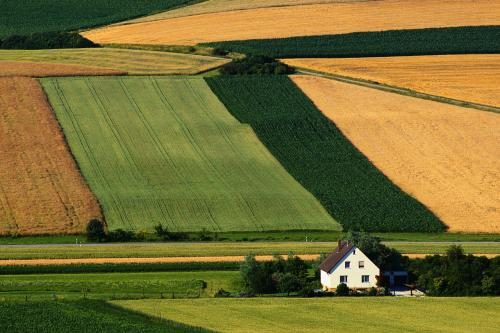Crop rotation is the practice of growing a series of dissimilar/different types of crops in the same area in sequential seasons. Judiciously applied (i.e. selecting a suitable crop) crop rotation can improve soil structure and fertility by alternating deep-rooted and shallow-rooted plants. In turn this can reduce erosion and increase infiltration capacity, thereby reducing downstream flood risk. It gives various benefits to the soil. A traditional element of crop rotation is the replenishment of nitrogen through the use of green manure in sequence with cereals and other crops. Crop rotation also mitigates the build-up of pathogens and pests that often occurs when one species is continuously cropped. However, as crop rotation has been traditionally practiced for agronomic reasons rather than to achieve environmental and water objectives, new practices may be required to ensure water retention benefits can be achieved. Some crops such as potatoes carry greater risks of erosion due to formation of ridges and the greater area of bare soil (see for example: http://publications.naturalengland.org.uk/file/5925127770341376). Crop rotation can be used in combination with other measures when these are compatible with crop choice.
| Benefits | Level |
|---|---|
|
BP2 - Slow runoff
|
Medium
|
|
BP6 - Increase infiltration and/or groundwater recharge
|
Medium
|
|
BP7 - Increase soil water retention
|
Medium
|
|
BP8 - Reduce pollutant sources
|
Medium
|
|
BP9 - Intercept pollution pathways
|
High
|
|
BP10 - Reduce erosion and/or sediment delivery
|
Low
|
|
BP11 - Improve soils
|
High
|
|
BP17 - Absorb and/or retain CO2
|
Medium
|
|
ES4 - Biodiversity preservation
|
Low
|
|
ES6 - Groundwater/aquifer recharge
|
Medium
|
|
ES7 - Flood risk reduction
|
Low
|
|
ES8 - Erosion/sediment control
|
Low
|
|
ES9 - Filtration of pollutants
|
Medium
|
|
ES11 - Aesthetic/cultural value
|
Medium
|
|
PO2 - Improving status of physico-chemical quality elements
|
Medium
|
|
PO4 - Improving chemical status and priority substances
|
Low
|
|
PO7 - Prevent surface water status deterioration
|
Medium
|
|
PO9 - Take adequate and co-ordinated measures to reduce flood risks
|
Low
|
|
PO11 - Better protection for ecosystems and more use of Green Infrastructure
|
Medium
|
|
PO12 - More sustainable agriculture and forestry
|
Medium
|

